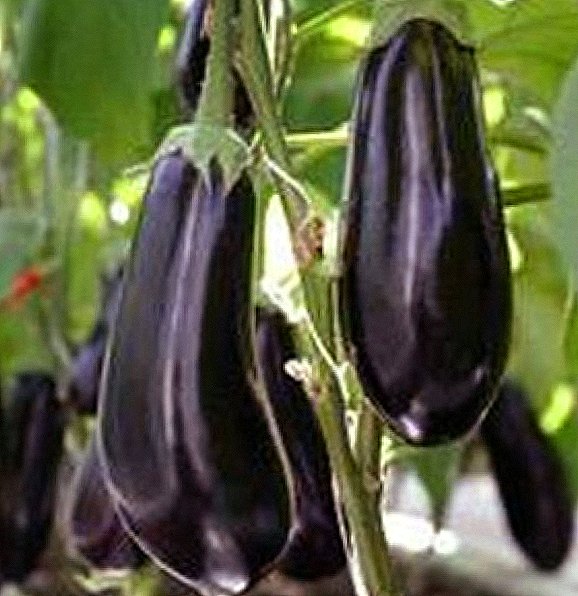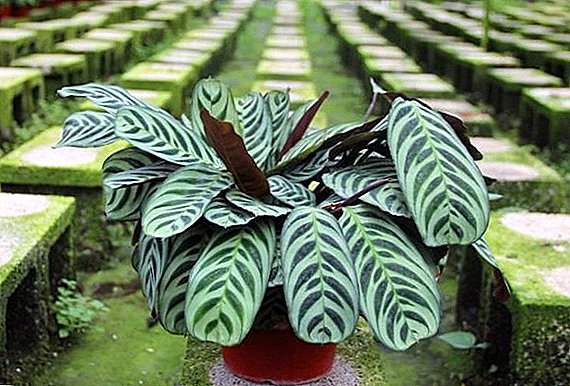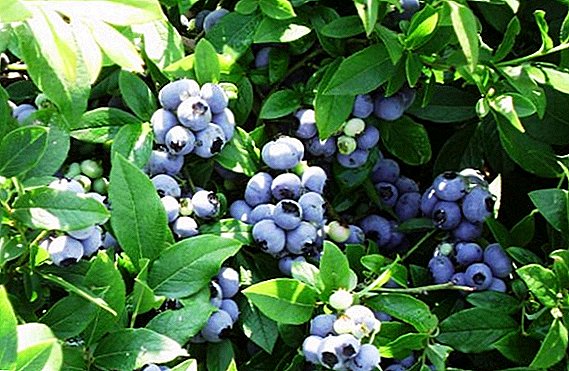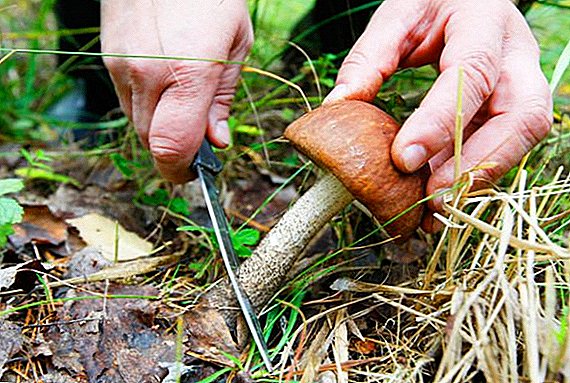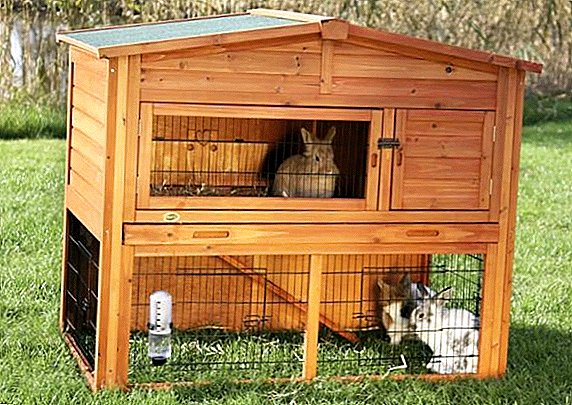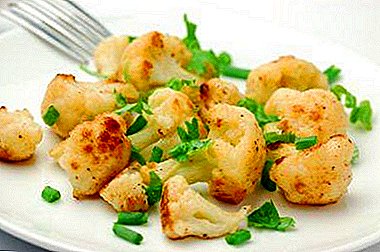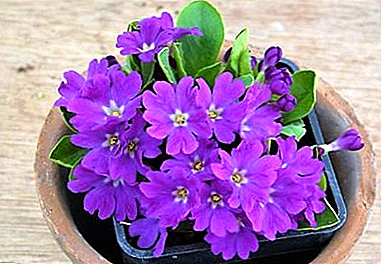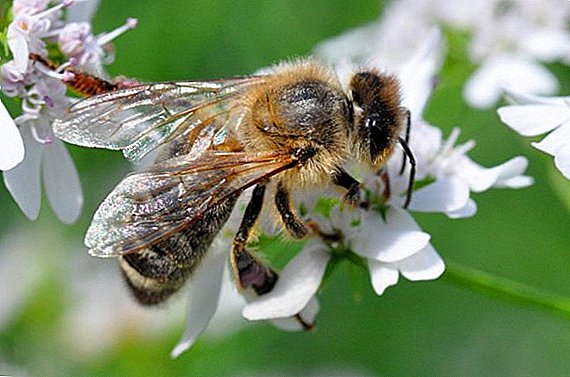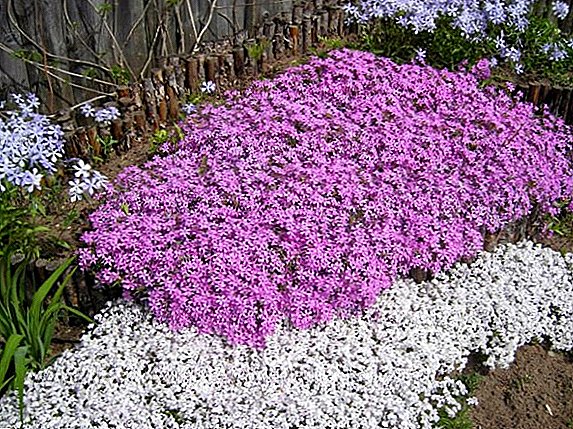 Summer residents in Siberia mostly grow annuals, fearing that perennial plants will not survive wintering in such harsh conditions. However, thanks to the efforts of breeders, it became possible to diversify and complement their flower beds with winter-hardy flowers, which tolerate wintering in the ground. Today in the article we will consider the brightest and most interesting names and photos. perennial flowers to give, suitable for the conditions of Siberia.
Summer residents in Siberia mostly grow annuals, fearing that perennial plants will not survive wintering in such harsh conditions. However, thanks to the efforts of breeders, it became possible to diversify and complement their flower beds with winter-hardy flowers, which tolerate wintering in the ground. Today in the article we will consider the brightest and most interesting names and photos. perennial flowers to give, suitable for the conditions of Siberia.
Chrysanthemum


The most adapted to the climate of Siberia - Korean chrysanthemum. It has straight, often branched stems, reaching a height of about 120 cm, there are both medium-growing and low-growing varieties. The leaves are torn, have several uneven edges, the color is light green. Sometimes the surface of the foliage can be fleecy. The inflorescence in the form of a basket can be simple, semi-double and terry. The chrysanthemum has many long narrow petals growing in several rows, in the center of the flower there are short tubular petals. The basket diameter is about 2 cm. Low-growing varieties are popular in the formation of living borders, well combined in compositions with other plants.
- "Cheburashka" (bright lilac);

- "Far East" (pink);

- "Josephine" (carmine).
Did you know? The Japanese value the chrysanthemum at the state level: its image is on the coins and the emblem of the country, the Order of the Chrysanthemum is one of the highest awards, the yellow chrysanthemum is present on the imperial seal.

Chrysanthemum "Josephine"
Chamber (sleep-grass)
Lumbago - spring perennial flower that can withstand a decrease in temperature to 20 ° C, which is not uncommon for Siberia. Unfortunately, the plant is on the verge of extinction, its name is listed in the Red Book. 
The perennial grows up to 35 cm, from the base of the straight fleecy stem, the rosette of narrow, filamentous leaves, also densely covered with fibers, blooms. It is noteworthy that the foliage and inflorescences appear almost simultaneously. Single inflorescences on a long peduncle, surrounded by stipules. Six-petal buds in the form of a wide bell, fully open flower in diameter up to 10 cm. Depending on the variety, the colors may be different:
- "Mrs. Van der Elst" (soft pink);
- "Rodde Klokke" (bright bordeaux);
- "White Swen" (white).

- good lighting;
- drained, fertile soil with a neutral reaction;
- the lack of close to the surface of groundwater - the ideal would be a place on a slope.

Back chamber "Rodde Klokke"
Kandyk Siberian
Spring plant up to 25 cm in height, thin, reddish stem at the base wrap growing up long leaves. The color of foliage is dark green with chaotic white blotches. The stem carries only one inflorescence. The six petals of the open bud are strongly bent back to the stem, exposing the stigma of the pistil and white-yellow stamens. The color of the petals is varied:
- "White Fang" - flowers are large, white;
- "Zoya" - bright pink flowers;
- "Olga" - light pink flowers;
- "Mountain Shoria" - purple flowers.

Planting kandyk possible in the spring, he is not afraid of return frosts, even blooming flowers do not die at -50 ° C. In the shelter for the winter does not need.
Important! Transplanting or cleaning the soil around the plant should be done very carefully: Kandyk bulbs are very fragile and located close to the surface.

Kandyk Siberian "Altai Snow"
Rudbeckia
Rudbeckia has a long thin stalk, often not branched, covered with a pile, carrying one inflorescence. The leaves are larger in the lower part of the stem - there they form an outlet, higher on short petioles are sessile solitary. The leaf is elongated, with smooth edges and a pale stripe in the center. The inflorescences are shaped in the form of large baskets with a diameter of up to 15 cm. The petals running along the edge are long reed, in the center are short tubular. Shades of flowers can be both bright, sunny and purple-dark. It blooms in summer and in autumn. 
- Goldstrom (yellow with a dark middle);
- "Cherry Brandy" (velvet dark purple);
- "Gloriosa Daisy" (petals are dark brown in the center and golden on the edge).

Rudbeckia "Cherry Brandy"
Hyacinths
Hyacinth - bulbous spring plant, grows up to 40 cm in height. On a cylindrical, thick, short stem-peduncle a bright fluffy whisk with many flowers is formed. From the base of the stem in a circle grow dense elongated arrows of the leaves. Hyacinth flowers are small, usually six-petalled. Petals narrow, curved or twisted, simple or terry depending on the variety. The colors of the inflorescences are diverse: white, creamy, yellow; all shades of blue, pink and lilac; red, burgundy and purple.
The most interesting varieties:
- "Ametist" (lilac, pink);
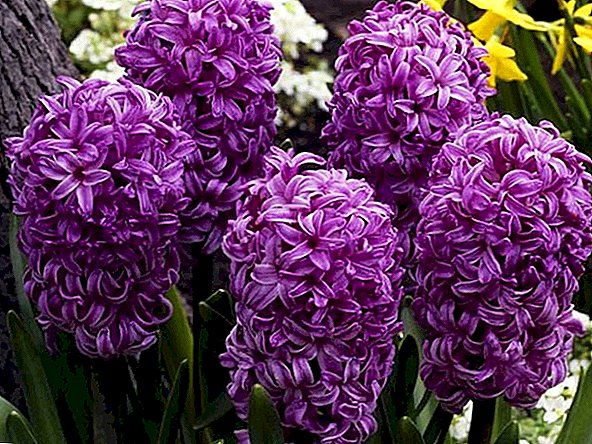
- "Anne Marie" (pink);
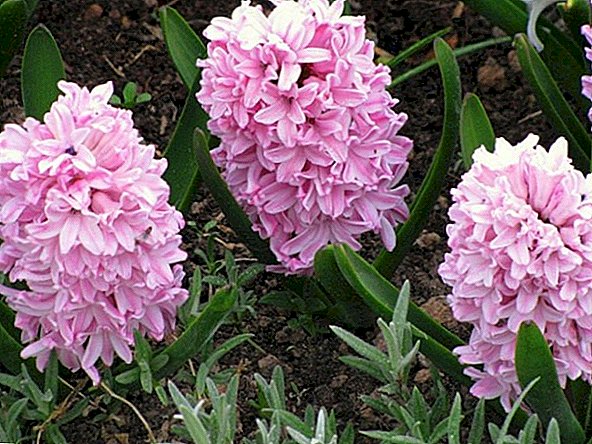
- "Yellow Hammer" (yellow);
- "Yang Bos" (red).
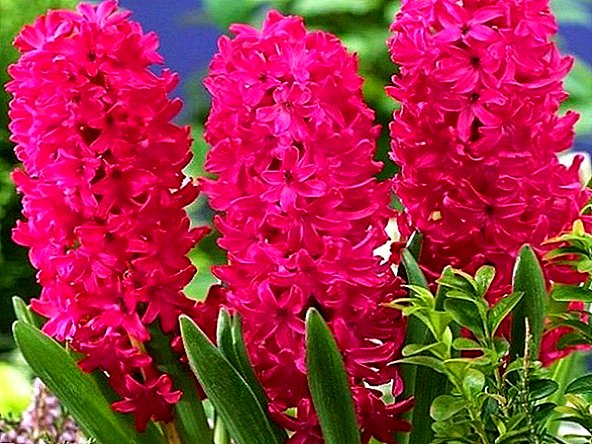
Important! The following year, the situation is more complicated with adult hyacinths: it is recommended to dig up its bulbs to ensure lush flowering, and also to prevent the degeneration of the variety.

Hyacinth "Yellow Hammer"
Muscari
Garden perennial flowers Muscari refer to family lily. The name unites more than sixty species distributed in Europe, Siberia, North America and Asia. Short, only up to 20 cm, a specimen with a straight stem and basal leaves. The leaves are narrow and long, pointed at the end, juicy, green. Inflorescence dense, elongated cone, white or blue shades. Blossoms depending on the variety in April-May from 10 to 25 days. 
- "Blue Spike" with blue terry flowers;
- "Alba" - white flowers;
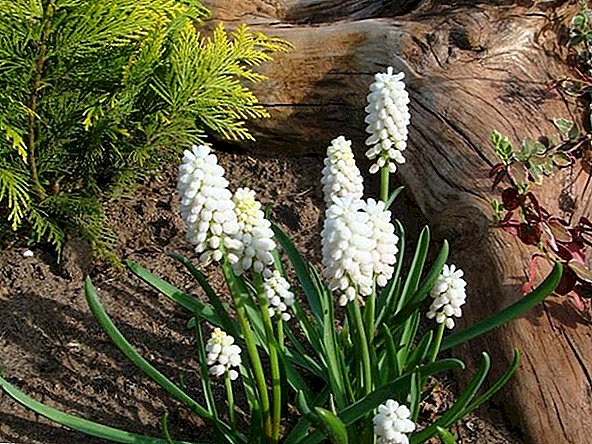
- "White Magic" - white.


Muscari "Blue Spyk"
Sedum
Sedum, or Sedum, belongs to ground cover plants, for which designers love it. Basically, they creeping or dwarf bushes, although there are high. Sedum has small but dense foliage, glossy green or with a touch. Inflorescences are collected in dense hemispheres, consisting of small flowers with five to six petals. The seed is brightly colored: it can be white, yellow, pink and magenta, blue and lilac. 
- Sight prominent (white, lilac, pink, red);

- Sedum Eversa (pink);
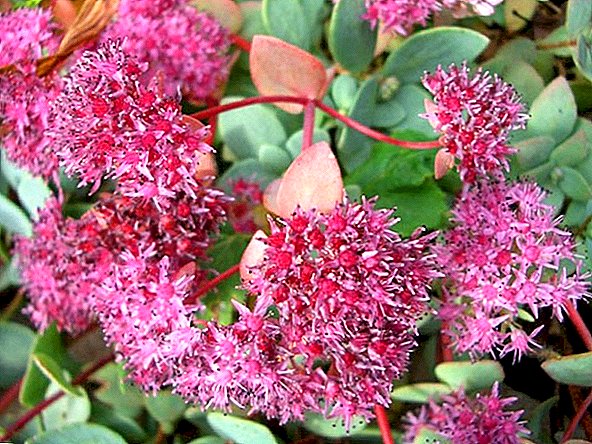
- Sedum white.
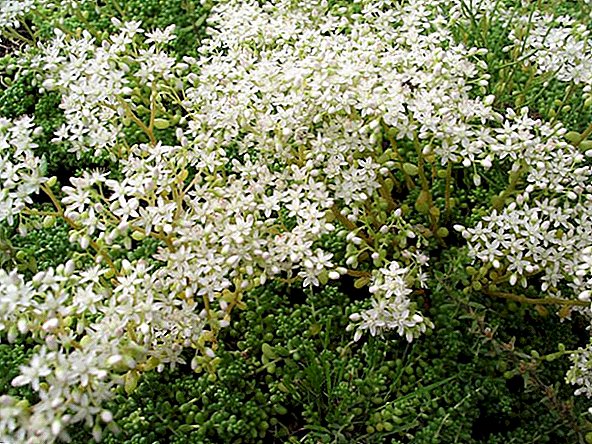

Sight prominent "Dark red"
Phlox
Phloxes are bright garden flowers of Siberia and deserve a description, with colorful photos and variety names. These are tall plants on a thin branched stem (except for creeping species), with bright green foliage, of elongated shape. Phloxes can decorate any composition in a flower bed or in rock gardens; they can serve as a border or a flower garden carpet. A flowerbed with multicolored plants looks bright and original: then they do not need to be supplemented with other flowers. Phlox have a long flowering period, there are varieties that bloom until autumn, we consider the species that bloom in spring: 
- Creeping phlox (shades of pink and lilac);
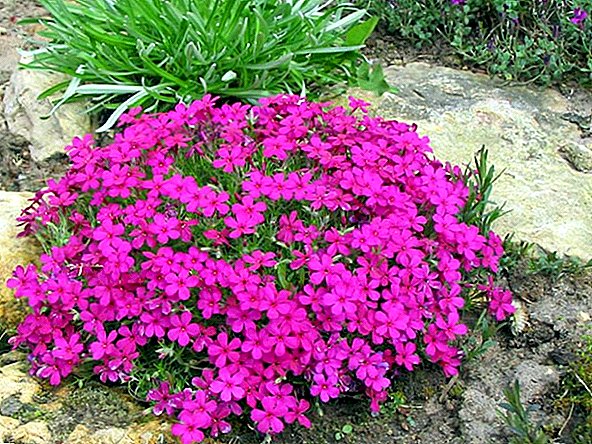
- Canadian phlox (shades of blue);
- Phlox subulate (white, pink, blue, lilac).
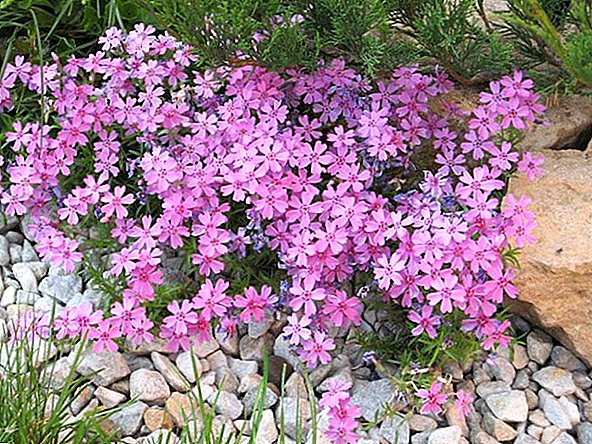
Planting phlox is carried out in the autumn, so that the flowers have time to take root before the onset of severe frosts. These plants love the sun, but not direct rays, slightly diffused light. Flowers need moderate, but regular watering, they all do not tolerate stagnant moisture in the root system, so take into account the location of groundwater when planting. Preference is given to drained, nutrient soils with a neutral reaction. Top dressing complex mineral is desirable, but not organic. Loosening is done carefully, so as not to damage the roots, the surface around the stems can be covered with mulch on hot days. Hibernate without shelter.
Young, carnation, aster, thyme, bell, jascolk, stonecrop, edelweiss, sage (salvia), geykhera and yarrow, as well as phloxes, light-loving perennial plants that will feel great in beds under constant exposure to direct sunlight.

Phlox canadian
Doronicum
Doronicum has a straight, single or slightly branched stem, grows from 30 cm to a meter in height, there are dwarf species. The color of the foliage and stems is light green, the shape of the leaves is heart-shaped or just round, with a short petiole. All types of doronicum bloom with yellow flowers: from lemon to orange. The flowers are large, with a lot of thin reed lobes on the edge and tubular in the middle. 
- "Spring Beauty" (terry, yellow);
- "Gold Dwarf" (dwarf);
- "Little Leo" (light yellow).

Doronikum "Columns"
Clematis
Clematis has more than three hundred species, for regions with a harsh climate was bred clematis burning. This variety is a long-liver, put a support to it, and it will embrace it, expanding both in width and in length. Clematis can live up to fifteen years in one place. This species blooms beautifully in small delicate flowers, asterisks. Lithuania has dark green creepers, not large, oval-shaped, with a sharp tip and a central vein. The plant blooms from early July to August (inclusive), two varieties of clematis stinging are known, both flowers are snow white:
- "Sea foam";
- Small white.

Clematis burning bad blooms in the shade, so the plot for him must be sunny. This plant is not just a perennial, clematis - long-liver, a place for it should be well thought out. He needs support and hilling stems in hot weather. Top dressings moderate, having watered regular, also moderate. Clematis does not need shelter for the winter, as it tolerates low temperatures perfectly. 
Small-flowered Clematis
Asters
Let's figure out what flowers to plant at a dacha in Siberia, what conditions to ensure that they bloom all summer. The photo below shows examples of flower beds.
 Asters Perennial - tall plants growing bush or not branched. The stem of the plant is upright, thin, but strong. The foliage is alternate, with a jagged edge, with narrow and long leaves, light green in color. Asters are represented by a variety of colors and shapes: there are flowers simple and terry, with needle-like petals. The color is white, all shades of pink, red, yellow and blue. Asters are characterized by long flowering, can decorate the garden until late autumn. Blooming varieties in autumn:
Asters Perennial - tall plants growing bush or not branched. The stem of the plant is upright, thin, but strong. The foliage is alternate, with a jagged edge, with narrow and long leaves, light green in color. Asters are represented by a variety of colors and shapes: there are flowers simple and terry, with needle-like petals. The color is white, all shades of pink, red, yellow and blue. Asters are characterized by long flowering, can decorate the garden until late autumn. Blooming varieties in autumn:
- "Beechwood Rivel" (dark maroon);
- "Dick Ballard" (lilac);
- "Mount Everest" (snow white);
- "Blue Danube" (blue).
Important! The trimming procedure for wintering plants is carried out before the onset of the first frost. Then tree trunks mulch, covering the rhizome.

Astra "Blue Danube"
Lilies
Not all types of flowers are suitable for Siberian gardens - the most winter-hardy hybrid varieties, derived from Asiatic lily. These are plants with a straight, thin stem, densely leafy, forming several peduncles. Some varieties form up to twenty inflorescences on one stem. The leaves are narrow, long, dense and glossy on top. The height of the stem varies from 30 cm to 1.5 meters. Lilies have a large variety of colors, they can be monochromatic and combine several colors, for example:
- "London" (lemon yellow with dark dots at the base of the petals);
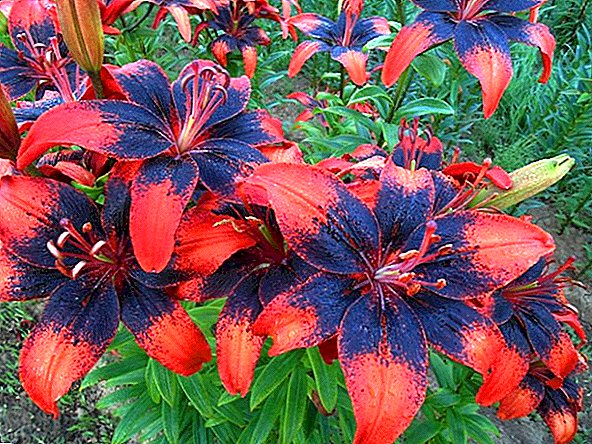
- "Lollipop" (maroon);
- "America" (purple).
Did you know? According to the ancient Greek myth, lily appeared from drops of Hera's breast milk. While feeding the little Hercules, as many drops of milk fell on the ground and turned into beautiful snow-white flowers with a bright aroma.

Lily America "
Astilba
Astilba grows as a shrub, it has straight strong stems with dense foliage. Plant height from 15 cm to 2 meters. The foliage is dark green, bright, with a jagged edge. On the stem during the flowering period, several flower stalks are formed, carrying paniculate or pyramidal, drooping inflorescences. The flowering period is different in all species, but the duration is the same - up to 35 days.
- "Pumila" (lilac);
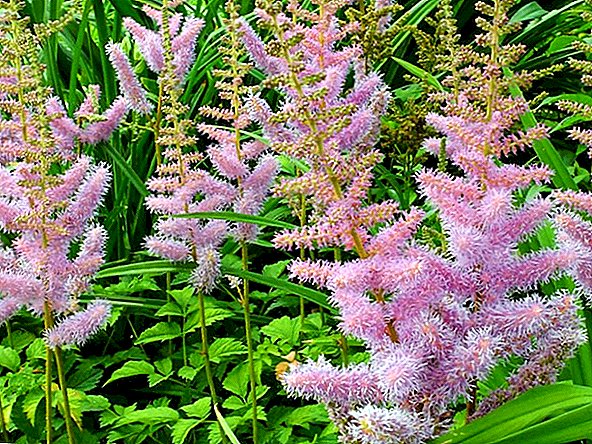
- "Peach Blossom" (pale pink);
- "Granat" (purple-garnet).

Astilba "Pomegranate"
Anemone (anemone)
Anemones - herbaceous plant, forming a low, up to 35 cm, but wide, up to half a meter in diameter, bush. Thin brownish stems form thick leafy rosettes along the entire length. The foliage is light green, elongated with a carved edge. The color can be white, pink and its shades, blue, blue, red.
- The Admiral (crimson);
- "Pink Star" (pink);
- "Blue Shades" (blue).

Anemone "Blue Shades"
Perennials for Siberia - it's just a find, because the wintering plants are less demanding to care than the tender annual flowers. And the varieties, derived from the climatic features of the Siberian winter, are mostly similar in terms of care and growing conditions. Today, the choice of flowers is quite large, and you can plant varieties with different flowering periods, providing your flower garden with a continuous fragrance.

















